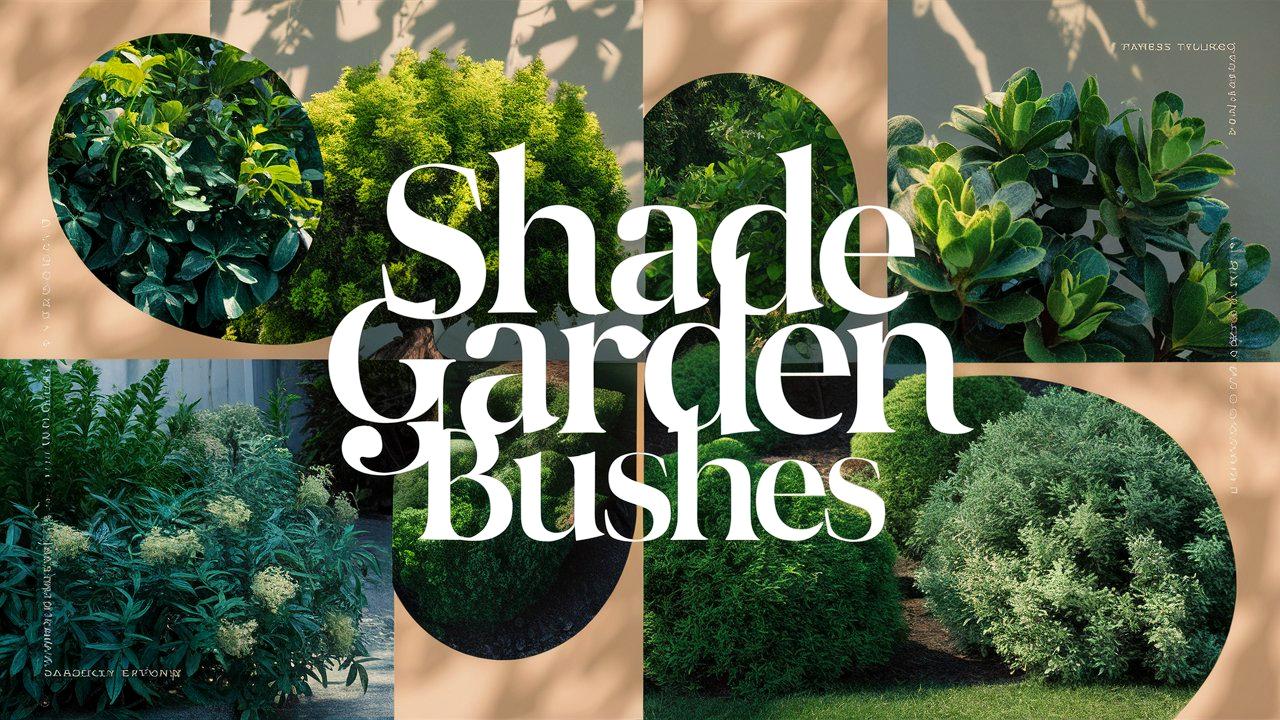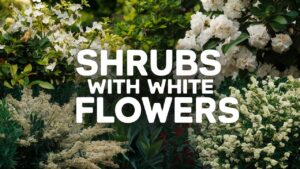Creating a beautiful shade garden can be one of the most rewarding horticultural endeavors, especially if you choose the right bushes. Shade gardens present unique challenges, but with the right selection of plants, they can thrive and become vibrant sanctuaries for wildlife and weary eyes looking for respite from the sun.
In this post, we’ll explore an array of beautiful shade-loving bushes that will flourish in those darker corners of your landscape, providing a unique touch to your garden. Let’s dive into some captivating and versatile choices for your shade garden!
African Scurf Pea
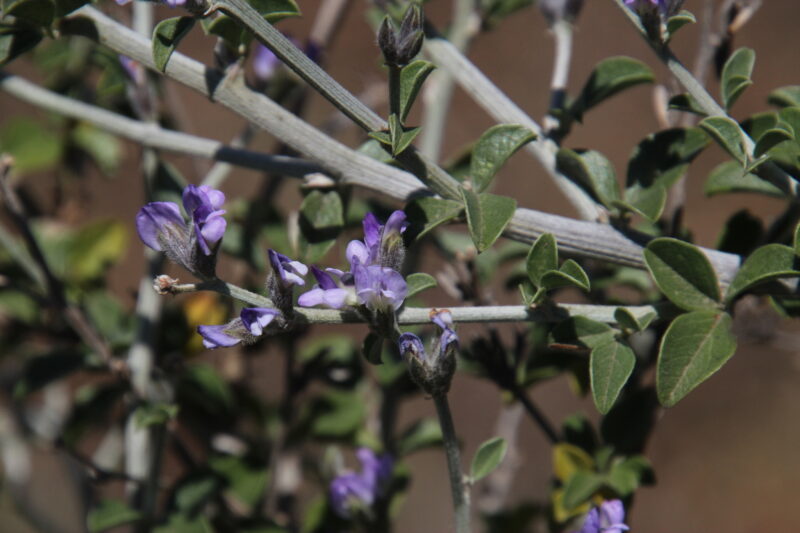
The African Scurf Pea, or Otholobium hirtum, is a hardy shrub that thrives in partial shade, marking it as an excellent choice for woodland gardens. Known for its distinctive fuzzy foliage and charming yellow flowers, this shrub can grow up to three feet tall and wide. Its drought resistance makes it a fantastic option for beginner gardeners who may still be mastering the nuances of watering. Its pea-like blossoms attract bees, making it an asset for pollinator-friendly gardens. Additionally, the lush green leaves provide a lovely backdrop for sunnier flowers alongside this resilient bush.
Alpine Currant

Ribes alpinum, or Alpine Currant, serves as an elegant choice for shaded landscapes. This versatile shrub can tolerate a wide range of soil conditions while thriving in partial sun to full shade. The Alpine Currant stands two to four feet tall and is an excellent choice for hedging. It produces small, inconspicuous flowers that give way to glossy berries, attracting birds in the process. The foliage turns a beautiful shade of yellow in the fall, providing seasonal interest. This shrub is low-maintenance and can be trimmed to fit different shapes, making it highly adaptable for beginners keen on landscape shaping.
Andromeda
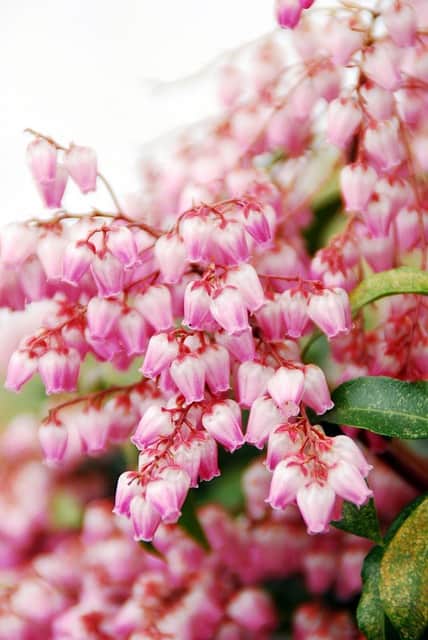
Also known as Pieris or Lily of the Valley shrub, Andromeda is an enchanting selection for shade gardens, with its delicate, bell-shaped blooms and glossy green leaves. This evergreen shrub can grow five to six feet tall, bringing a festive air year-round, particularly when its clusters of pink or white flowers bloom in early spring. Andromeda prefers acidic, well-draining soil and thrives in partial to full shade, providing valuable structure that can withstand even the coldest winters. Additionally, its low-light tolerance allows it to inhabit spots where other plants might struggle.
Arrowwood Viburnum
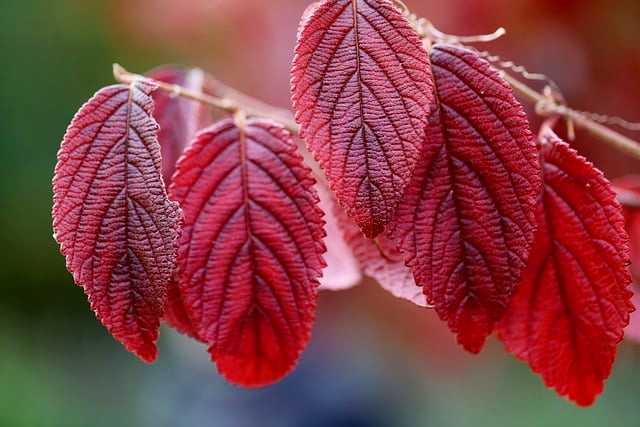
Arrowwood Viburnum (Viburnum dentatum) is a robust native shrub that provides both ornamental beauty and ecological benefits. Growing between five to ten feet tall, it blankets your garden with clusters of white flowers in spring, followed by blue-black berries that attract birds. This shrub tolerates partial shade and is uncomplicated to cultivate, requiring minimal maintenance once established. Its rounded shape and dense branching make it an excellent choice for privacy hedges or creating natural barriers. In the fall, enjoy its vibrant foliage as it transforms into autumn hues of red and orange.
Azalea
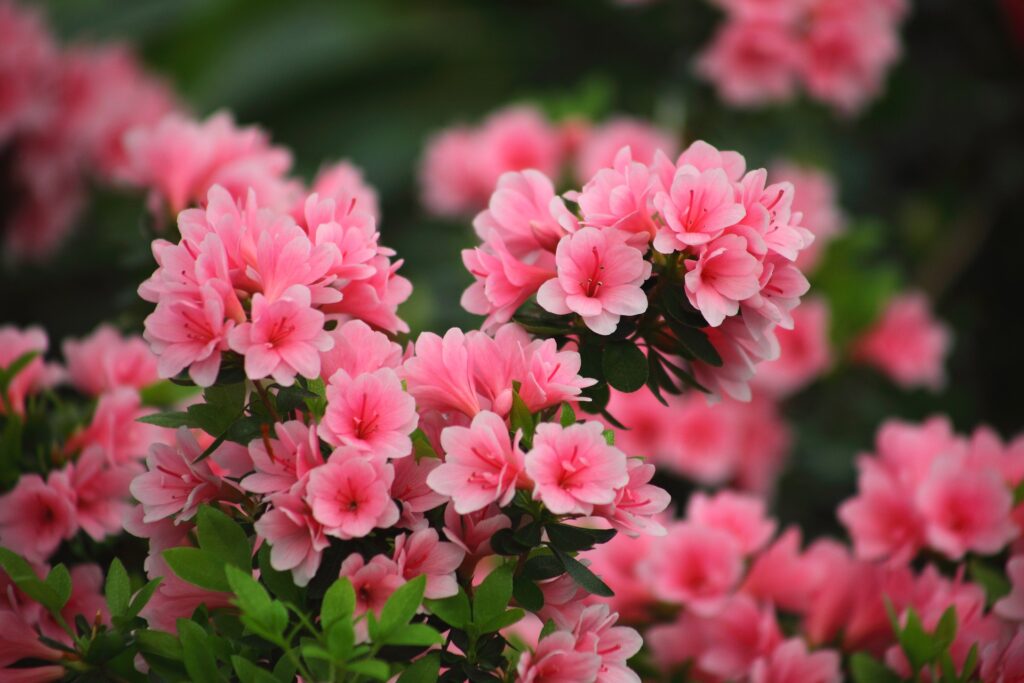
Azaleas are beloved companions in shade gardens for their breathtaking spring blossoms. With varieties ranging from low-growing ground covers to towering shrubs, there is an azalea for every space you wish to illuminate with color. They thrive in acidic, well-drained soils and perform well in dappled sunlight or complete shade. Their enchanting flowers attract bees and butterflies, enhancing the ecological allure of your garden. Be mindful that some species prefer more sunshine; thus, researching specific varieties can lead to the best results. The long-lasting blooms and evergreen options ensure that your shrub remains captivating year-round.
Bigleaf Hydrangea
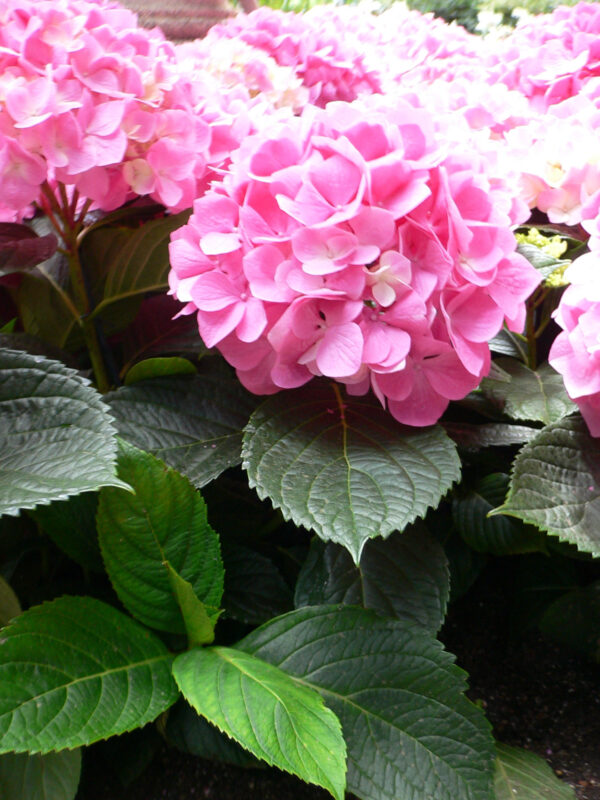
Bigleaf Hydrangeas (Hydrangea macrophylla) are a stunning addition to any shade garden, particularly valued for their show-stopping blooms that range from blue to pink, depending on soil pH. These shrubs thrive in partial to full shade, often reaching heights of three to six feet, making them perfect for layering in your garden beds. This shrub’s large, round flower clusters emerge in early summer and persist well into fall, adding vibrant color to shaded areas. As an easy-going plant, they need moisture to flourish, making them ideal for areas that retain humidity or near water features.
California Holly
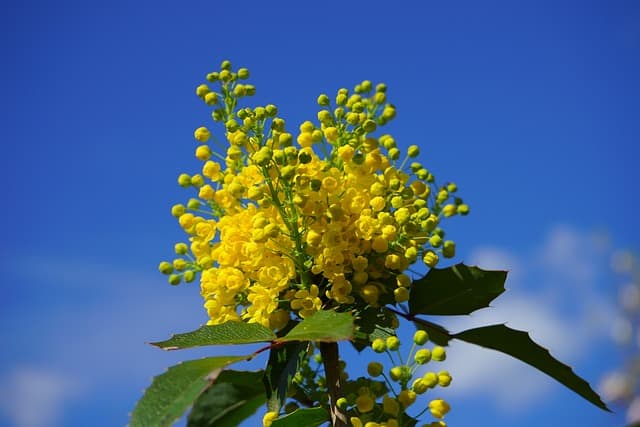
California Holly (Mahonia aquifolium), also called Oregon Grape, is a unique evergreen shrub boasting spiky, holly-like leaves that remain vibrant throughout the year. Its bright yellow flowers in early spring attract various pollinators and give way to dark blue berries that provide food for wildlife in the fall. This plant flourishes in both shady and partially sunny spots, making it an excellent choice for creating a lush underlayer in shade gardens. California Holly is hardy and resilient, championing itself as a robust option that will flourish with minimal intervention.
Camellia
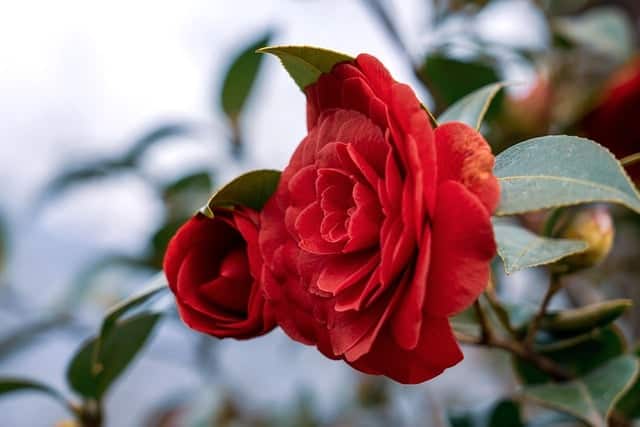
Known for their exquisite blooms and glossy leaves, Camellias are the jewels of the shade garden. Flowering in late winter to early spring, Camellias produce large, rose-like flowers in hues of white, pink, and red, creating a stunning contrast to the plant’s rich green foliage. They thrive in partial to full shade and prefer well-draining, acidic soil. These evergreen beauties can grow into large shrubs, providing a visually-striking feature even during dormant seasons. Regular watering during dry spells can optimize their growth and flower production, making them a generous and rewarding investment for your garden.
Canadian Bunchberry
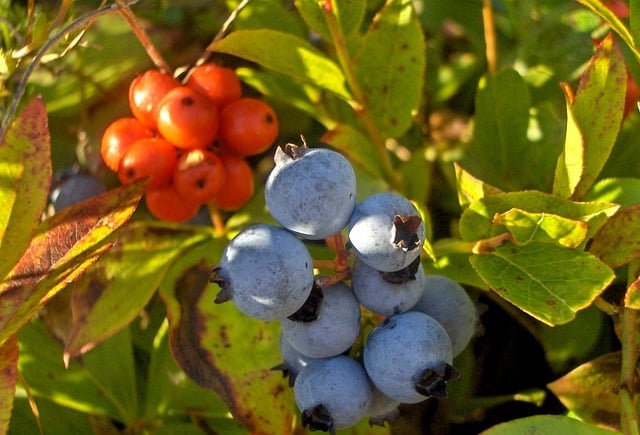
For those looking to introduce native plants, consider the Canadian Bunchberry (Cornus canadensis), a delightful ground cover that thrives in shady, woodland settings. It features charming clusters of white flowers in spring, which are followed by bright red berries in the summer—an irresistible treat for local wildlife. This perennial can spread widely, making it perfect for filling in those shady patches under trees. Furthermore, it helps prevent soil erosion, making it ecologically beneficial while contributing subtle beauty to your garden.
Canadian Hemlock
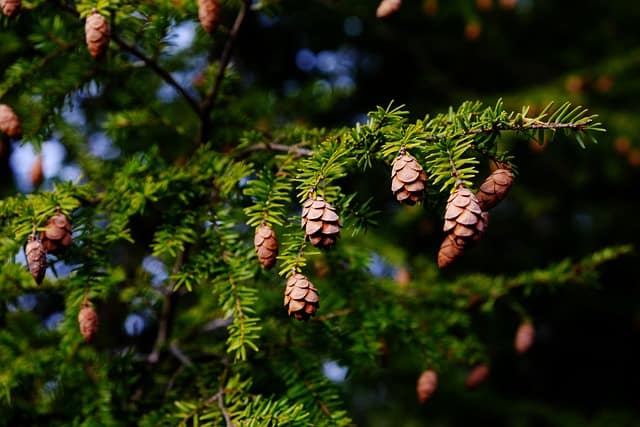
While primarily known as a tree, the Canadian Hemlock (Tsuga canadensis) can also be cultivated as a bush in shaded gardens. When pruned, this plant can lend a soft, graceful touch to your landscape, growing up to 70 feet tall in its natural setting. This tree, which enjoys moist, well-drained soil, provides year-round interest with its fine needles and attractive cones. Utilize its shade to allow other shade plants to thrive beneath while benefiting from its lower environmental impact and habitat value for nearby wildlife.
Checkerberry
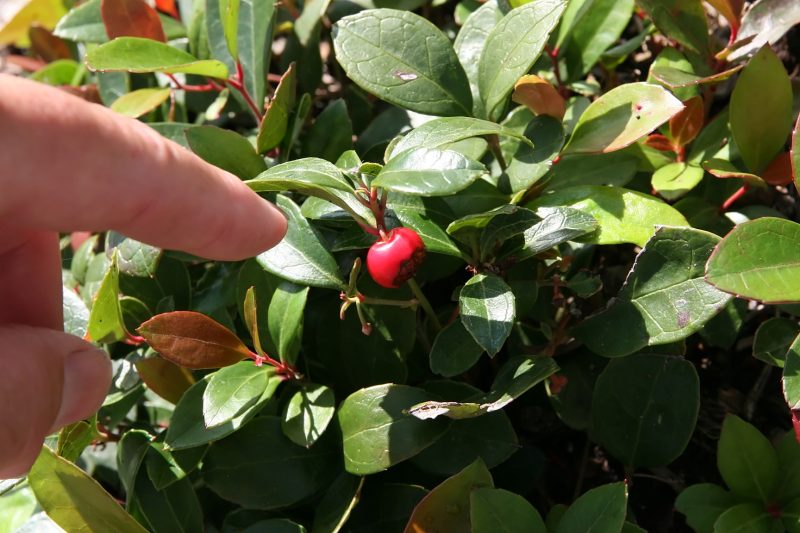
Checkerberry, or Gaultheria procumbens, is a low-growing evergreen shrub that thrives in shady woodland gardens and offers delightful red berries along with fragrant foliage throughout the year. This charming plant grows only about a foot tall and can spread efficiently, creating a beautiful ground cover in shady spots. Its berries can be a treat for birds, while the leaves provide a unique scent when crushed. Checkerberries are perfect for beginners, as they adapt well to poorer soils and require minimal care.
Chinese Fringe-Flower
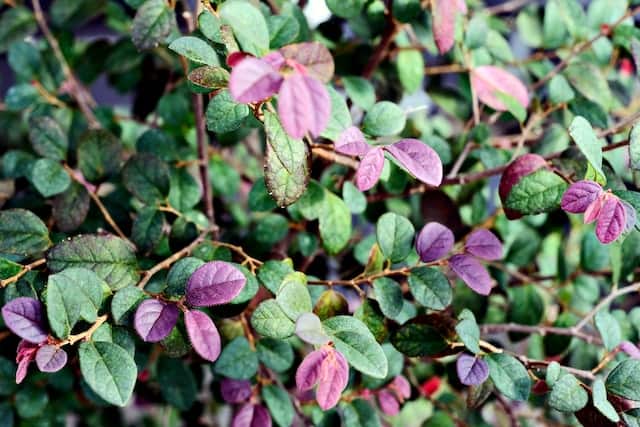
Chinese Fringe-Flower (Loropetalum chinense) is a unique shrub known for its fringed, spidery blooms that come in shades of pink or white during spring. Its foliage is equally striking, with purple and green-variegated leaves that add an unusual charm to your shade garden. This evergreen shrub grows between three to six feet high, making it versatile for various garden arrangements. Chinese Fringe-Flower prefers partial shade and well-drained soils, making it a fantastic choice for those looking to infuse a layer of whimsical beauty into their shaded spots.
Clethra
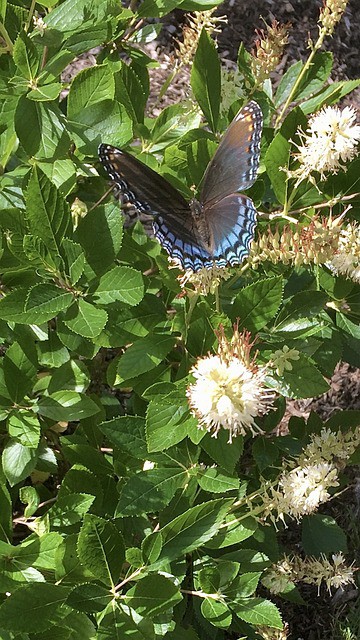
Clethra, also known as Summer Sweet, brings delightful, fragrant white to pink flower spikes to your shade garden. This deciduous shrub will grow between three to eight feet tall and thrives in moist, somewhat acidic soils. It is adaptable to various light conditions, doing particularly well in partial shade. The flowers invite pollinators, while the glossy green foliage turns golden-yellow in fall for added seasonal intrigue. Clethra’s sweet scent, especially during its blooming period, can attract butterflies, making your outdoor space feel welcoming and vibrant.
Coast Leucothoe
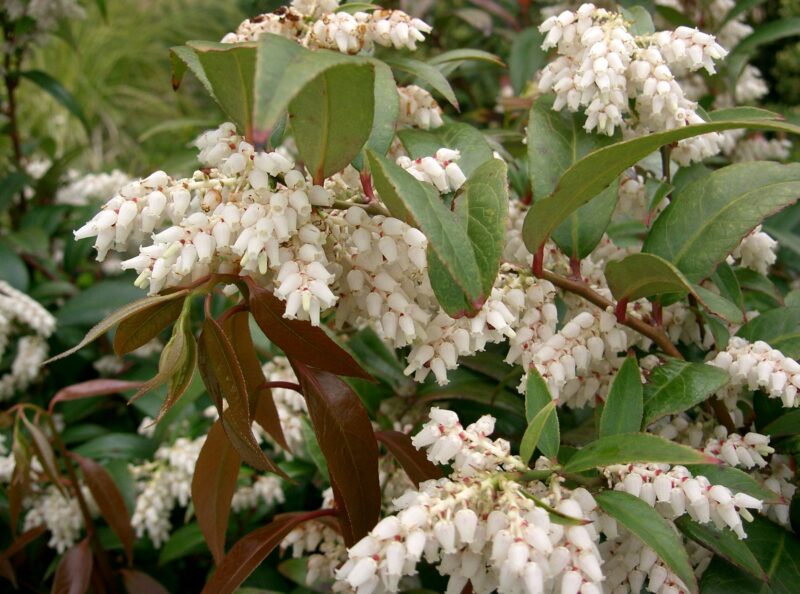
The Coast Leucothoe (Leucothoe axillaris) is an undemanding, evergreen shrub that showcases drooping, bell-shaped flowers in spring, resembling tiny lanterns amongst lush foliage. This plant grows well in shady areas and can reach heights of three to four feet, making it a striking choice for naturalizing spaces. Its glossy leaves turn a rich, deep red in the fall, offering stunning seasonal diversity. Coast Leucothoe can thrive in moist, well-drained soils and withstands occasional drought, creating a low-maintenance solution for shade gardens.
Boxwood
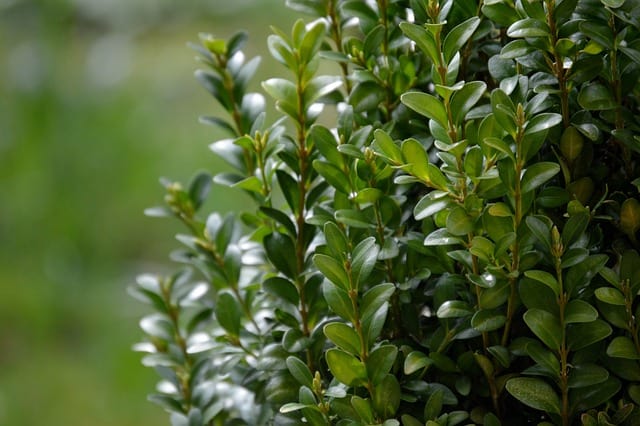
Boxwoods (Buxus spp.) are classic favorites in many gardens, offering a formal touch to shaded settings. They thrive in partial to full shade and are commonly pruned into hedges or individual rounded shapes. Boxwoods provide year-round structure, retaining green foliage even in dormancy. Ideal for framing pathways or creating green walls in shady spots, they are incredibly versatile in design. While they can withstand various soil conditions, consistent watering promotes healthy growth, especially during dry spells.
Witch Hazel
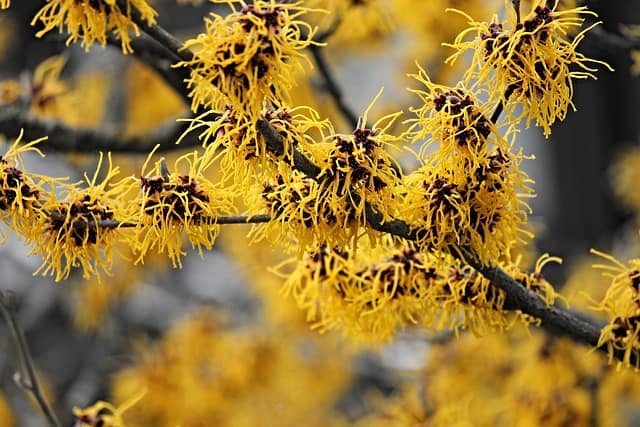
Witch hazel (Hamamelis virginiana) is a distinctive shrub known for its unusual flowers and incredible fragrance, making it a standout in any shaded areas. This plant generally blooms in late winter to early spring, offering a welcomed burst of color when other plants remain dormant. Witch Hazel can grow six to ten feet tall and prefers well-drained soil; it can flourish in partial shade. Its unique ribbon-like flowers, ranging in shades of yellow to red, attract pollinators while the shrub sets the stage for an enchanting winter wonderland.
Creeping Barberry
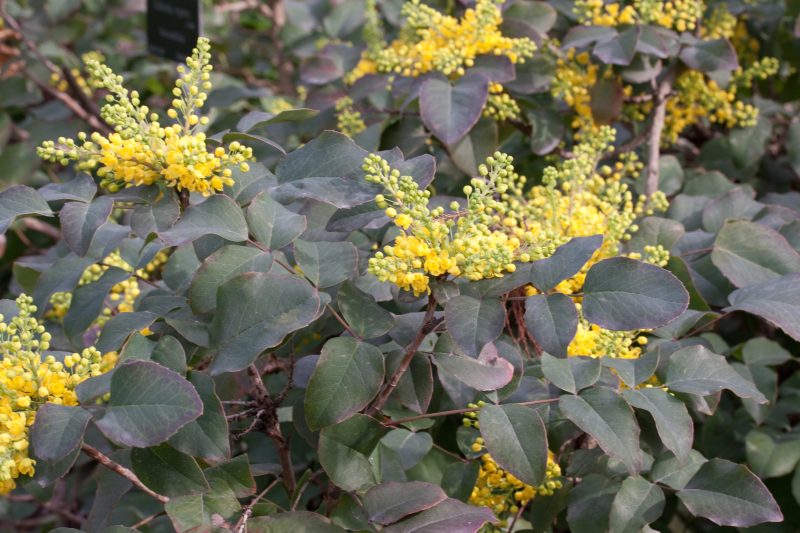
Creeping Barberry (Berberis repens) is a low-growing, evergreen shrub that thrives in shade and partial sunlight. Its thorny nature makes it a great security feature while offering charming, bright yellow flowers in spring, followed by striking blue berries in the summer. This shrub is adaptable, salt-tolerant, and resistant to deer, making it an resilient choice even for challenging environments. Growing only about a foot tall, it can serve as an excellent ground cover, controlling weeds while integrating vibrant color into your garden.
Daphne
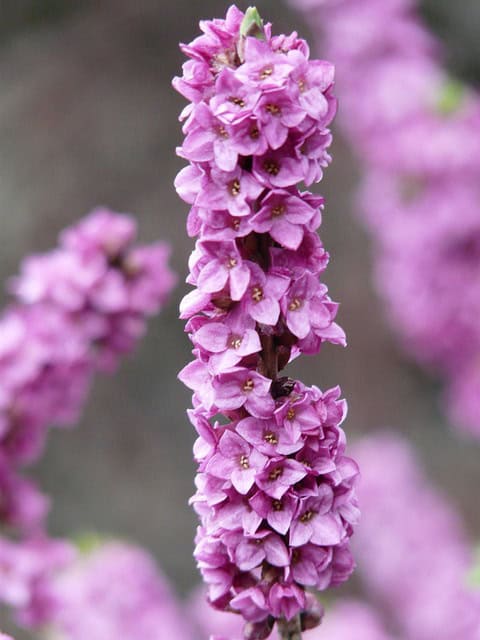
Daphne is regarded as one of the most fragrant shrubs available. With its delicate pink or white blossoms, it adds a sensational touch to shaded areas in any garden. This compact shrub typically reaches heights of two to four feet and prefers partial shade and well-drained soil. It may require more attention than other plants; however, the enticing fragrance and beauty of its slender flowers make planting this shrub worthwhile. Regular mulching can help retain moisture, making it easier to care for in a beginner’s garden.
Emerald ‘n Gold Euonymus
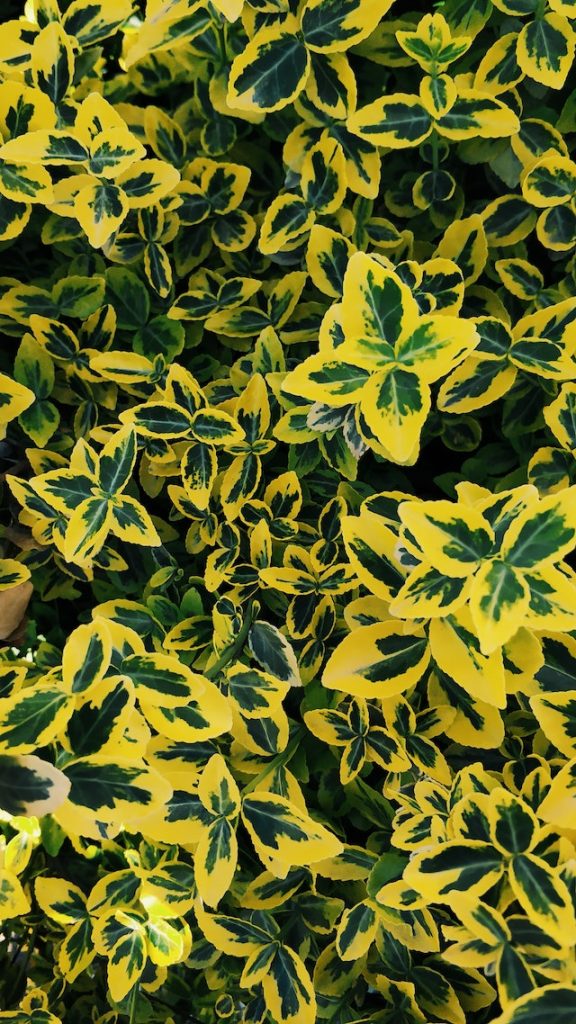
The Emerald ‘n Gold Euonymus (Euonymus fortunei) is a delightful variegated shrub that adds accent color in shady spots for year-round beauty. With its rich green and golden-yellow leaves, it attracts the eye while remaining low-maintenance. This ground-hugging shrub grows about a foot tall and is great for creating hardy borders or filling in gaps in garden beds. While it thrives in partial shade, it can also tolerate full sun. Additionally, it has good drought tolerance once established, benefiting beginner gardeners looking for reliable shade-friendly plants.
Fire Cracker Plant
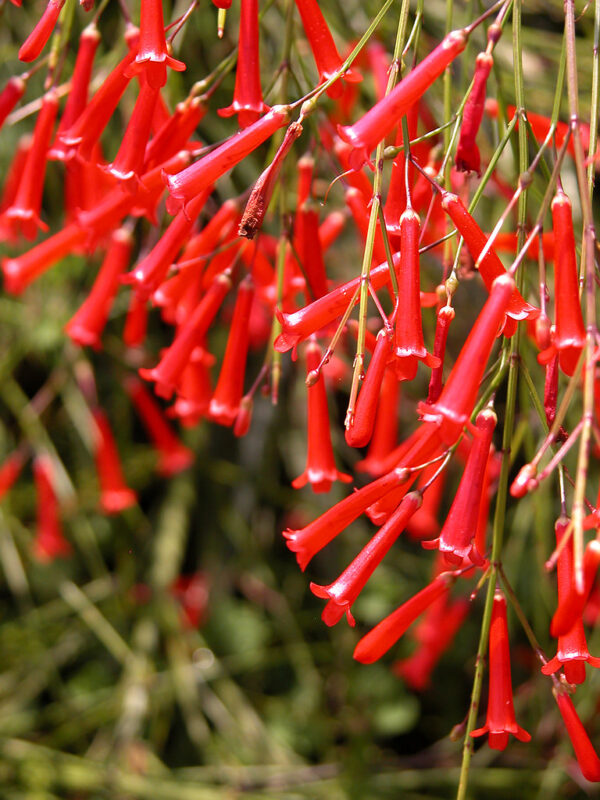
Commonly known as the Fire Cracker Plant (Russelia equisetiformis), this shrub is perfect for those seeking vibrant color in shady spaces. Producing striking tubular red flowers, it attracts hummingbirds, lending life to your garden. While it thrives best in partial shade, it does well in various soil conditions, making it accessible for beginners. Growing between two to four feet tall, the Fire Cracker Plant is versatile and can be used as a filler or centerpiece in your garden. Regular pruning will encourage bushier growth and more blooms for added vibrancy.
Japanese Rose
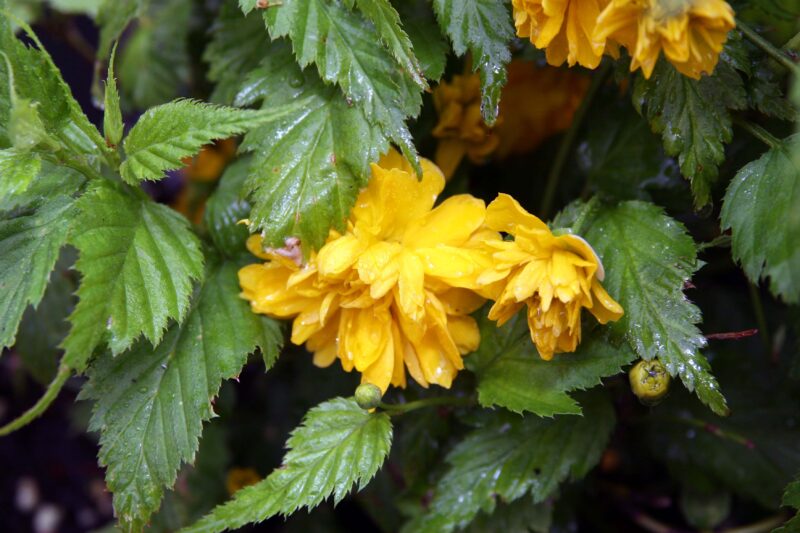
The Japanese Rose or Kerria japonica is known for its brilliant yellow flowers that bloom in spring. This bush can reach heights of three to six feet, making it a beautiful addition to shady boundaries or hedgerows. Thriving in partial shade with well-drained soil, the Japanese Rose flourishes in various conditions. Beyond its stunning blooms, its lush green foliage provides a visual treat throughout the growing season. Plus, this shrub promotes biodiversity, attracting beneficial insects and providing habitats for small wildlife.
Japanese Skimmia
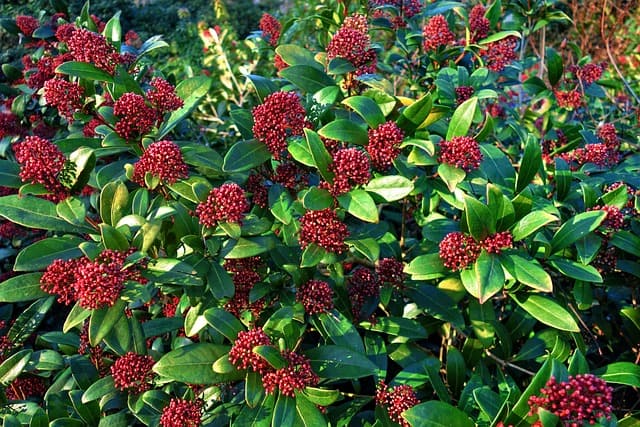
The Japanese Skimmia (Skimmia japonica) is an evergreen shrub, prized for its fragrant flowers and shiny foliage. It reaches about three to four feet in height and thrives in partial to full shade, making it perfect for woodland gardens. The white flowers bloom in the early spring, and if you plant male and female varieties together, the female plants produce red berries in the fall, adding additional color to your garden. The lush green leaves contrast beautifully with these bright red jewels and make it a great choice for winter interest.
Mountain Laurel
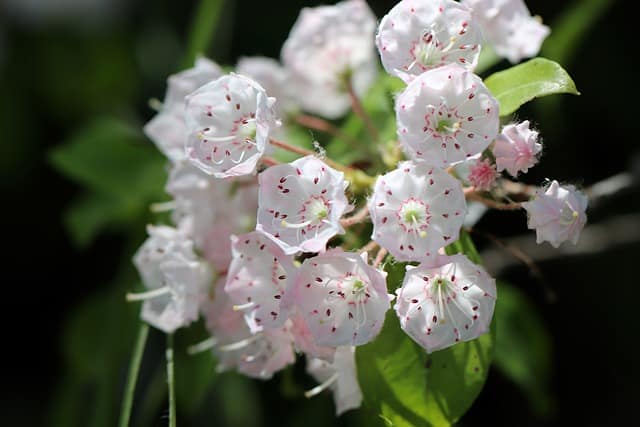
Mountain Laurel (Kalmia latifolia) is a hardy, evergreen shrub adored for its exquisite clusters of pink or white flowers that appear in late spring or early summer. This native shrub thrives in the shade and can grow between four to ten feet tall, often forming thickets. Jackfruit prefers acidic, well-drained soils, making it a charming option for woodlands or shaded corners. Its glossy leaves maintain interest year-round, and the flowers provide a striking contrast, becoming a favorite with pollinators during their blooming season.
Oakleaf Hydrangea
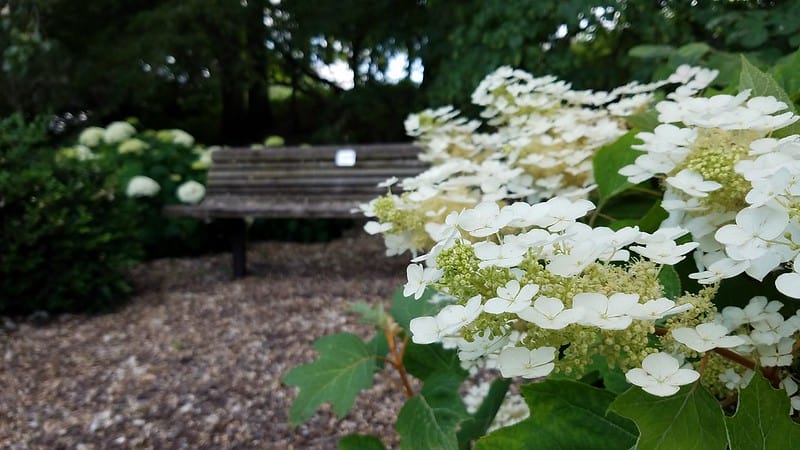
Oakleaf Hydrangea (Hydrangea quercifolia) is best known for its striking, oak-like leaves and impressive cones of white flowers that bloom in summer. This deciduous shrub thrives in partial shade and can grow between three to six feet tall. Throughout the fall, the foliage turns vibrant shades of red and orange, creating an eye-catching display as seasons change. Once established, these shrubs are drought-tolerant and discard minimal maintenance, making them an excellent choice for beginners. Their flowers can also attract butterflies and other pollinators, adding life to your garden.
Rhododendron
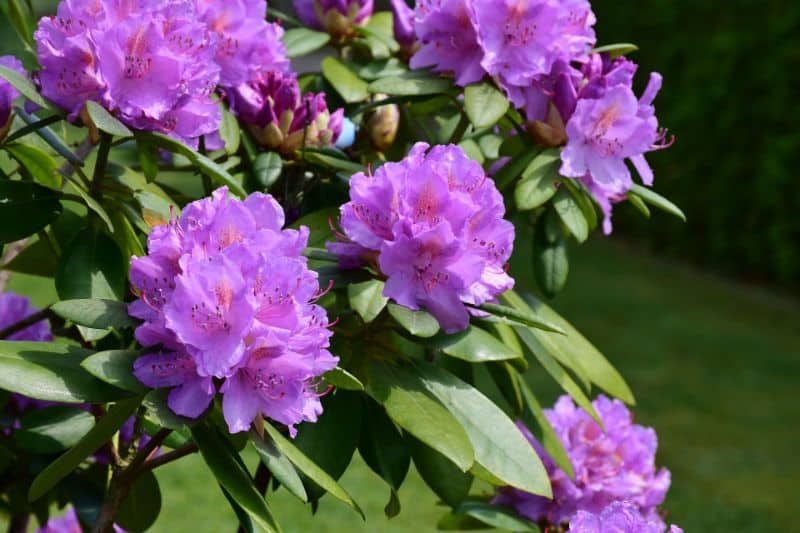
Rhododendrons are well-loved shade-loving shrubs that bring a burst of color to any garden. With a vigorous growth habit, these shrubs can range dramatically in size from small, compact varieties to towering specimens reaching up to twelve feet. They bloom in stunning clusters of blossoms that come in various colors, making them versatile for layering in your garden. They thrive in acidic, well-drained soils and prefer partial shade for the best results. While requiring periodic care—such as pruning or fertilization—these vibrant shrubs reward your efforts with dramatic bursts of color.
Serviceberry
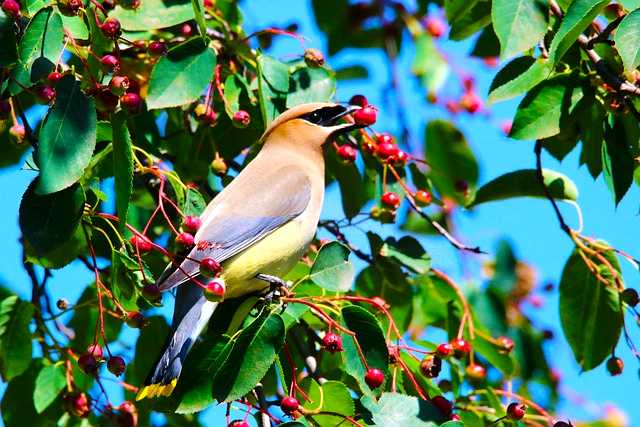
The Serviceberry (Amelanchier spp.) is a small tree or large shrub that shines in shaded environments. This plant boasts delicate white flowers in early spring, followed by small, sweet berries that ripen in summer, attracting birds and wildlife. Typically growing between five to twenty feet tall, Serviceberry plants thrive in well-draining soil and can tolerate some shade, presenting an opportunity for gardeners to incorporate them into those harder-to-fill areas. The foliage transforms to a radiant red in the fall, ensuring year-round interest in your shade garden.
Silk Tassel Bush
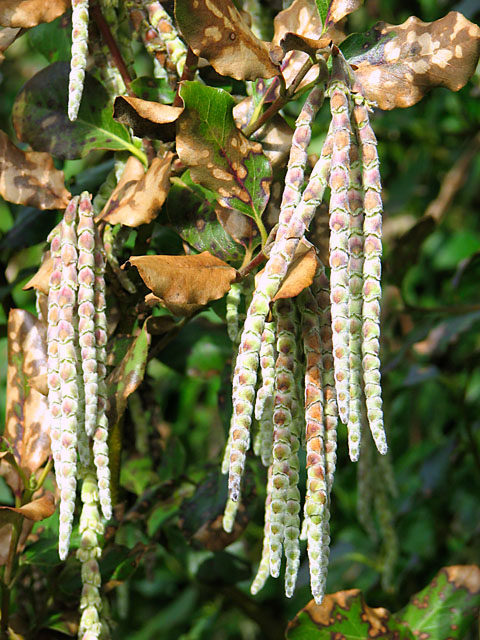
The Silk Tassel Bush (Garrya elliptica) is an evergreen shrub that stands out for its distinctive, silken tassels that hang from the branches during winter. It thrives in partial shade while growing between six to ten feet tall, making it an eye-catching feature in the winter months. The plant prefers well-draining, acidic soil and is drought-resistant once established. Its evergreen leaves provide shelter for birds, while the striking catkins add a unique visual interest to your shade garden when many others lie dormant.
Spotted Laurel
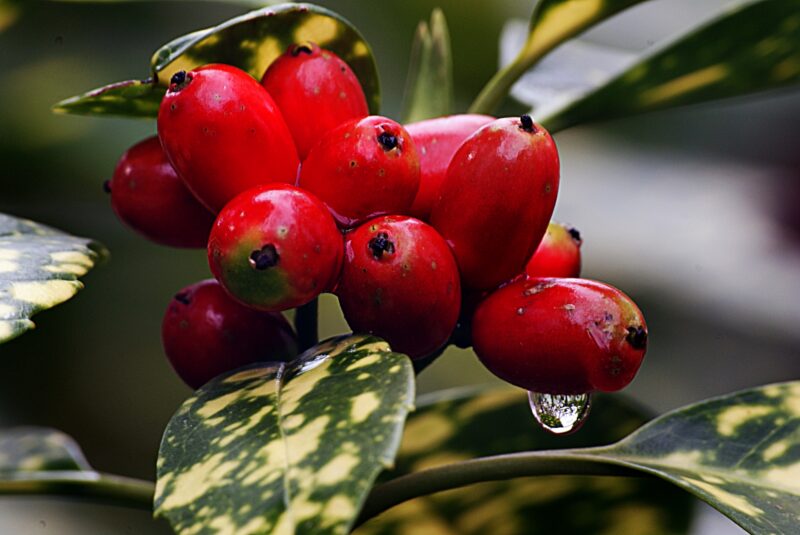
Spotted Laurel (Aucuba japonica) is an interesting shrub valued for its bold, spotted leaves that add a playful tone to your shade garden. It tolerates deep shade and can grow between three to ten feet tall, making it an adaptable choice for almost any layout. The shrub produces clusters of small, yellow flowers in the spring, and the female plants bear vivid red berries that can last into winter. Spotted Laurel requires minimal care, making it an accessible option for beginner gardeners who want eye-catching plants with year-round interest.
Sumac
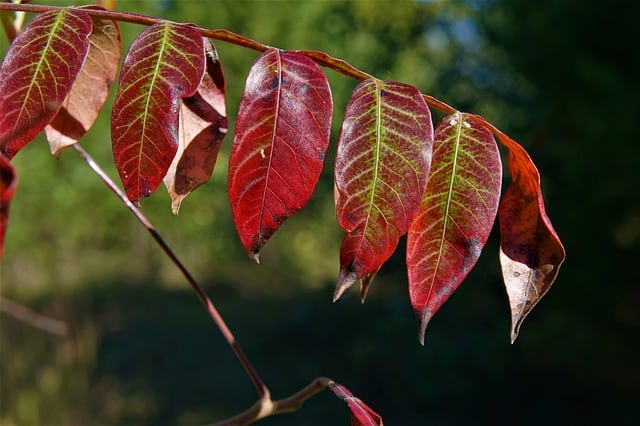
Sumac (Rhus spp.) is an often-overlooked shrub, yet it thrives in less-than-ideal soil conditions and offers fantastic color in the fall. Beyond its ornamental value, Sumac produces bright red clusters of fruit at the tips during summer, often sourcing food for birds and wildlife. Growing between three to fifteen feet tall, it requires little maintenance, making it a practical option for beginners. It flourishes in sunny to partial shade environments and showcases beautiful red and orange foliage in the fall, turning your garden into a captivating canvas.
Yew
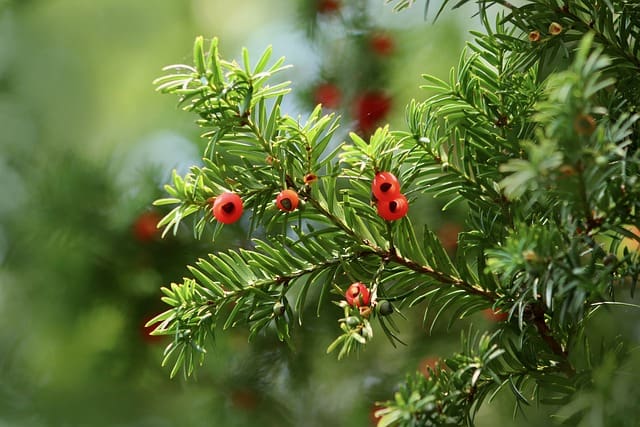
Yew (Taxus spp.) is a classical evergreen shrub that does exceptionally well in shade gardens. With its rich green needles and ability to adapt to various soil types, this plant has long been favored for formal hedges and privacy screens. Depending on the variety, Yews can grow from one to twenty feet tall, allowing for versatility in your garden design. Specifically well-suited for shaded areas, they require little maintenance once established, making them a great option for beginner gardeners. The bright red berries are a delightful sight during winter months, even as the rest of the garden lags in interest.


